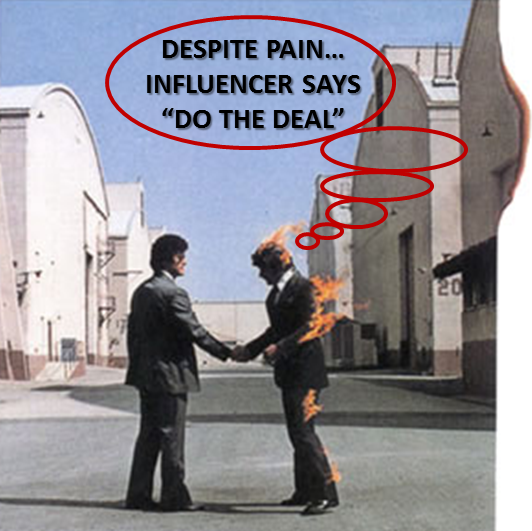 My first true experience in the world of B2B marketing was in 1990. My task was simple: market one of our new products to company “X”. My task could not have been simpler – while “X” was not a current customer/partner, they were very well known for purchasing our type of product, which was then integrated and resold as part of their own, much larger, product line.
My first true experience in the world of B2B marketing was in 1990. My task was simple: market one of our new products to company “X”. My task could not have been simpler – while “X” was not a current customer/partner, they were very well known for purchasing our type of product, which was then integrated and resold as part of their own, much larger, product line.
Diligently, I worked my way into their organization armed with all the right information. I knew exactly what and how much they were buying, what their key price points were, who the buyer would be, who evaluated new products, who the decision maker would be and, most importantly, who controlled the funding.
“my B2B had become a B Not 2 B”
And after 9 months of chasing every lead, every opportunity, meeting at every trade show, and even managing to get their staff to do a side-by-side product comparison, I was left with absolutely nothing. No sale. No opportunity. Nothing.
Nothing, that is, except the realization that I had started my task without one necessary key bit of information: the name of the actual “influencer” who could make such a deal a reality. For lack of this name, my B2B had become a B Not 2 B.
In this case, it turned out that the influencer was the head of operations for a single customer of my target, a customer that had such a significant installed base that when my target inquired about their willingness to introduce a new product (mine) into their network, they informed my target that while they were not totally happy with the existing product mix, they saw no value in adding a new, potentially disruptive, component into their network, even if it was smaller and less expensive. It had nothing to do with price or features and everything to do with mitigation of risk and not having to retrain their internal staff on a network that was “doing just fine”.
Had I known this to begin with, I would have found a way to “influence” my target’s actual customer directly. It may have worked, or it may not have. But I do know that my chances of success would have increased considerably (and yes, I do think I could have closed the deal).
 In the years since, the lesson I learned has driven my business decisions in every single venture I’ve started: if you identify the key influencer any deal, and get them to buy into your product or concept before your actual market pitch to the target buyer, your chances of success increases significantly (your time to sale can decrease as well).
In the years since, the lesson I learned has driven my business decisions in every single venture I’ve started: if you identify the key influencer any deal, and get them to buy into your product or concept before your actual market pitch to the target buyer, your chances of success increases significantly (your time to sale can decrease as well).
As a side note, one other lesson I’ve learned is that if you can’t convince the influencer (especially if it is your target’s customer) of your value, it’s sometimes, but not always, better to factor in the opportunity cost and find a better prospect.
Flash forward to today and the era of social marketing and the ever increasing pace of technology and product development. It’s more important than ever to understand how each individual deal is influenced, and who is involved as they key influencer, which can differ extremely on a case-by-case basis. It may be a person within the business you are targeting, or it may be consultant, advisor or industry analyst. Or, like my first experience, it may be a customer of your target (or a collective group of customers) who in turn may be influenced by their own C2C communications or consultants, advisors and industry analysts (industry analysts, btw, are my favorite starting point, since a really good analyst will know who the consultants and advisors are working with, as well as the requirements of both vendors and consumers in any given market).
The real challenge today is in identifying the real influencer(s), as the number and type of people who can influence a B2B (or B2C) deal has grown tremendously (as has the speed with which, in the era of social networking , a deal can be influenced one way or another). As a result, an increased number of purchasing/partnership deals that are not totally internally driven involve more than one outside “influencer” – a trend that mirrors both uncertainty in the consumer space as well as the fragmentation of the consultant/advisor/analyst space.

To counter this, we see a strong requirement for an increased level of cross-domain collaboration within businesses, involving marketing, public relations, analyst relations and even customer support being required to correctly identify and target the influencer in any B2B or B2C marketing or sales strategy.
So although the technologies and markets may have changed, the “influencer” axiom, which has been around since the first bartered exchange in human history, applies today more than ever, and is one of the first questions I always ask myself before beginning any business effort.
And if this question isn’t one of the first questions you ask, it should be.

Pingback: Tweets that mention Buyers vs Influencers: Who really controls the deal? « fredmcclimans.com -- Topsy.com()
Pingback: #B2BChat: Analysts, Analyst Relations and Influencers in B2B « Mesh Without Wires()